A Dozen Top Innovators
Lori Burkhart is Managing Editor of Public Utilities Fortnightly.
There were seventy-one submissions to be a Fortnightly Top Innovator 2018. It means making the winner's list of the elite dozen — one in six of the nominations — was not easy. The three judges scrutinized the entries, ensuring that making the elite dozen is meaningful.

The list looks different this year, as last year there were forty. And while the word elite might make you think of March Madness, it isn't that time of year yet, but it is that tough to get in. Some of the most brilliant minds in the utility industry are found here and they worked hard. That's because they are transitioning the industry. It isn't business as usual anymore with the dependable utility reliably bringing electric and gas to customers.
Utilities are ground-breaking, nimble, pioneering, original, fun and they are creating solutions to problems while making a better future. Yes, our utilities are indeed innovative. In no specific order the twelve winners are listed here.
Prepare to be fascinated by what these top innovators are accomplishing and contributing to make the world a better place. It's that big.
1. Bryan Pham, Hamilton Pham and Michael Kohler of Edison International and Southern California Edison
Let's talk major cost savings, a welcome topic. Edison International and subsidiary Southern California Edison showcase an innovative team that developed and patented a Distribution Volt/VAR Control (DVVC) capacitor optimization algorithm that optimizes customer voltage profiles and saves energy.
 From left: Hamilton Pham, Bryan Pham, and Mike Kohler of Edison International and Southern California Edison
From left: Hamilton Pham, Bryan Pham, and Mike Kohler of Edison International and Southern California Edison
The innovators helping save all that energy and cash are SCE's Bryan Pham, senior manager, engineering; Hamilton Pham, senior engineer; and Michael Kohler, IT specialist/engineer.
This algorithm works by centralizing control of the field and substation capacitors and coordinating and optimizing voltage and VARs across all circuits fed by a distribution substation. DVVC has been deployed at SCE in nearly three hundred substations, one of the largest deployments in the nation.
It took someone like Bryan Pham, an engineer with thirty years of engineering and management experience at SCE under his belt to bring an extraordinary project like this to fruition. He evaluates emerging technologies and develops solutions for the next generation substation and distribution automation to improve the reliability of SCE's transmission and distribution systems and provide key capabilities for grid modernization.
You know that electric utilities are required to maintain customer voltage and VAR within a specific range. Historically, distribution voltage and VARs have been controlled with automated field capacitors on distribution circuits and substation capacitors. While control was automated, each device acted autonomously based on location-specific conditions. When multiple decentralized, uncoordinated capacitors are turned on, it can cause higher than necessary customer voltage and energy consumption.
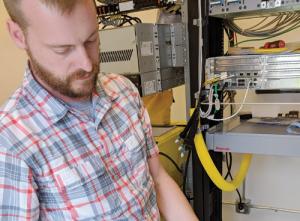 Cole Crews of Ameren
Cole Crews of Ameren
The primary benefit of DVVC is less energy use through reduction of average voltage, and secondary benefits include reduced greenhouse gas emissions; improved asset management through real-time detection of capacitor failure; and increased capacity of distributed energy resources through integration of smart inverters that help manage voltage and power factor on the grid.
But look at the money involved. The algorithm produces avoided energy procurement and capacity costs with a one-percent actual savings in energy costs for customers for every one-percent reduction in voltage, with no behavior change required from customers.
For SCE's roughly five billion dollars in annual energy procurement costs, DVVC deployment across SCE's system is expected to yield fifty million in reduced energy procurement costs each year. Truly major cost savings.
Of course, Bryan Pham had a great team on the project with him, not only did Hamilton Pham provide valuable contributions, Michael Kohler, senior SCADA software engineer has a degree in aerospace, aeronautical and astronautical engineering, so we have to say it: he's a rocket scientist.
2. Cole Crews of Ameren
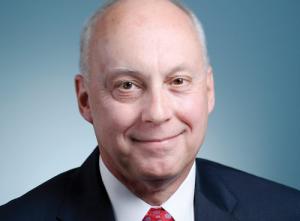 Mark Lantrip of Southern Company
Mark Lantrip of Southern Company
Long-term evolution. We all love our smart phones and expect communications capabilities wherever we go, so why should utility companies be any different? Ameren gains a spot in our top twelve innovators for being the first utility in the United States to deploy a private LTE network.
Three years ago, Cole Crews, a career engineer in Ameren's network engineering and operations group, recognized that existing bandwidth would not support Ameren's long-term communications needs. He began to work collaboratively on a solution that would be scalable, supporting exponential growth expected in wireless devices as part of connected communities and the grid of the future. On top of all that, Crews is made for video and has an exciting presence on YouTube that you should check out.
The word exponential is important here, because all utilities will be facing growth in communications needs and are sure to be looking for solutions.
Ameren has completed its first installation of private LTE to support technology required to deploy distribution automation and distributed energy resource controls. But why stop there?
 Nicholas Jewell of Louisville Gas and Electric Company and Kentucky Utilities Company
Nicholas Jewell of Louisville Gas and Electric Company and Kentucky Utilities Company
In 2018, a second pilot site is coming online at the Ameren Illinois Technology Applications Center near the University of Illinois, which focuses on the monitoring, optimization and dispatch of distributed generation equipment including solar, wind, and battery storage. Again, why stop there?
A third location for installation of a private LTE network is slated at Ameren's corporate headquarters in St. Louis.
The possibilities are endless, because once the new communications systems are in place, it allows for more innovative thinking by Crews, who is chairman of the UTC National Telecom Committee, and his team, including John Hughes, director, IT, Ameren, who has over thirty years in the engineering and information technology arenas, and serves as an advisor for EPRI's PDU Information Communication and Technology Program Advisory Board, as well as advisor for ATT Energy Council.
The pilot required close collaboration with the Federal Communications Commission and the Electric Power Research Institute. With EPRI involved, the sky is the limit.
3. Mark Lantrip of Southern Company
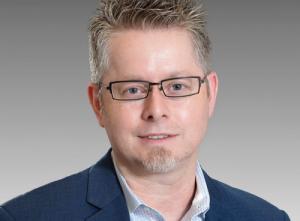 Dan Butcher of Exelon’s PECO
Dan Butcher of Exelon’s PECO
Southern Company appears to want to innovate everywhere and is succeeding. PowerSecure, Southern Company's distributed infrastructure development company, has upped the innovation game and is a leading developer of microgrids and resiliency products to commercial and industrial customers nationwide.
It is led by known innovator, Mark Lantrip, CEO of Southern Company Services, responsible for overseeing the company's unregulated and innovation business strategies, and who also oversees Southern Company's industry-leading research and development organization and its launching of new technologies for the generation, delivery and use of energy.
PowerSecure, the largest commercial microgrid developer to date, has seen an increase in the percent of its commercial projects that are third-party owned from less than ten percent pre-2011, to ten to twenty percent in 2011-2016, to forty-two percent in 2017.
The end-user-owned capacity in the Southeast is largely made up of PowerSecure microgrid systems. The high degree of utility-owned microgrid capacity in the southeast can be attributed to large-scale projects with dispatchable generation. Examples include Robins AFB in Georgia and the GRU South Energy Center in Florida.
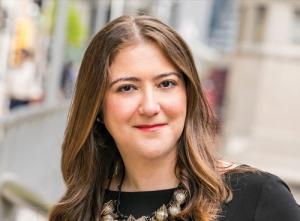 Shay Bahramirad of Exelon’s Commonwealth Edison
Shay Bahramirad of Exelon’s Commonwealth Edison
Lantrip is an innovator to watch as co-chair of the Institute for Electric Innovation, focused on advancing the adoption of innovative and efficient technologies among electric utilities and their technology partners that aim to transform the power grid. He also chairs the board of the Alliance for Transportation Electrification, a broad and diverse coalition of organizations that advocate for an acceleration of transportation electrification.
4. Nicholas Jewell of Louisville Gas and Electric Company and Kentucky Utilities Company
Energy storage is officially exciting and collaborative. LG&E and KU's Energy Storage Research and Demonstration Site at E.W. Brown Generating Station is a group effort with the Electric Power Research Institute, utilities, university researchers and equipment vendors.
Nicholas Jewell, senior research engineer in LG&E and KU's R&D department, led the design and installation of Kentucky's first utility-scale energy storage system and its current operation.
You can read what he has to say about this amazing project in his interview in this issue of PUF.
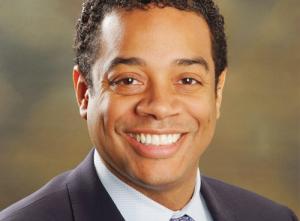 Sandor Williams of Exelon’s Commonwealth Edison
Sandor Williams of Exelon’s Commonwealth Edison
It's a unique site in the utility industry, a testbed for evaluating energy storage technologies and the only true test facility capable of simultaneously hosting multiple megawatt-scale, grid-connected storage systems in the United States. It's co-located with several generation sources including: coal, natural gas, hydro, and solar, allowing researchers to analyze both grid-connected, and microgrid configurations.
The site at E.W. Brown Generating Station allows utilities to combine efforts and evaluate energy storage, thereby cutting tech evaluation costs, while gathering data, examining performance, and monitoring technology developments without the need for multiple test sites.
LG&E and KU's research focuses on investigating operational characteristics, such as performance and reliability, costs associated with technologies, as well as developing solutions for integration challenges with the evolving grid.
Look for more exciting innovation as Jewell is leading a team planning two more energy storage systems at the E.W. Brown site. That's to be expected by a person whose interests lie in new and emerging technologies and how they affect our lives.
 Tom Butler and Catherine O’Dell of North Carolina Electric Cooperatives
Tom Butler and Catherine O’Dell of North Carolina Electric Cooperatives
He leads a working group within EPRI's Energy Storage Integration Council to help develop standardized testing and evaluation protocols for energy storage technologies, as well as an industry-wide effort to develop standardized energy storage test protocols, and the associated test manual for EPRI and the Energy Storage Integration Council.
5. Dan Butcher of Exelon's PECO
Major storms have been big news and we all hate losing power. Enter PECO, an innovator that has worked with Qlik and consulting partner IPC Global to enhance current storm response processes for its 1.6 million customers. PECO's Storm Live Interactive Qlik 'SLIQ' Platform surfaces data from multiple source systems into one integrated solution for response team leaders to enable real-time data informed decisionmaking.
Led by Dan Butcher, senior business analyst at PECO, SLIQ uses hyper-local data from past outages and current weather conditions to respond to an outage rapidly and predict where one is most likely to occur. This allows crews to stand ready to respond when it is safe to do so, ensuring the shortest outages possible.
Butcher's SLIQ was named in the Exelon 2017 Annual Report as having won second place in the 2017 Exelon Innovation Expo.
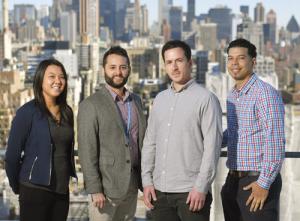 From left: Jennifer Moy, Eric Mastroianni, Michael Salerno, and Edwin Perez of Consolidated Edison
From left: Jennifer Moy, Eric Mastroianni, Michael Salerno, and Edwin Perez of Consolidated Edison
PECO's employees love this innovation. SLIQ Platform won the employee vote in Exelon's 2017 and 2018 Innovation Expos, placing in the top three in the Ideation and Implementation categories. With three-hundred annual innovation entries across Exelon, SLIQ's appearance in the finals of each category validates the impact and value forecast for storm-response operations.
SLIQ Platform incorporates affected data sets from across the utility including: smart meters, outage management jobs, geospatial layers, finance, innovation, customer relationship management, GPS, and more. The data assimilation enables PECO to optimize real-time restoration decisions in emergency storm scenarios.
PECO with a single Qlik application aims to dramatically improve its ability to direct resources, efficiently restore power to its customers, and communicate accurately with them. The key is Qlik's ability to integrate real-time data from smart meters with other outage management data. It won't end at PECO, because the success of the initial SLIQ deployment qualifies SLIQ for consideration at other Exelon energy distributors as a standard best practice. That's great news, because consumers want their power back fast after a storm and with this innovation they will get it.
6. Shay Bahramirad and Sandor Williams of Exelon's Commonwealth Edison
Helping a neighborhood that has fallen on hard times, ComEd is bringing the future to the historic Bronzeville neighborhood on the south side of Chicago.
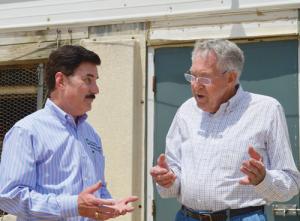 Chris Spears and Tom Butler of North Carolina Electric Cooperatives
Chris Spears and Tom Butler of North Carolina Electric Cooperatives
For over a hundred years, Bronzeville has been the heart of Chicago's African-American community. On Lake Michigan and about four miles south of downtown Chicago, you'll recognize the great names that hail from there. Nat King Cole, Quincy Jones, Jesse Owens, Duke Ellington, Joe Louis and too many more to specify here; but it's a long list.
Bronzeville is experiencing major revitalization efforts and ComEd is ensuring its second renaissance to become the Community of the Future, a place where reliable, clean energy and wireless communications provide the backbone for other smart-city features including efficient transportation options, responsive safety services, and near real-time two-way communication options for residents.
ComEd, led by Shay Bahramirad, vice president of engineering and smart grid, Sandor Williams, manager of smart grid and technology, and Bronzeville community leaders partnered to identify community needs and priorities and then leveraged the smart grid and related technologies for a more connected, green and resilient environment.
How can you not feel good about that? But more innovation lies ahead.
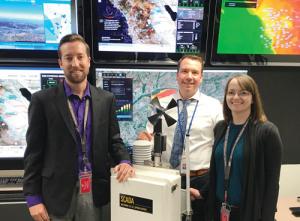 From left: Steve Vanderburg, Brian D’Agostino, and Katie Giannecchini of San Diego Gas & Electric
From left: Steve Vanderburg, Brian D’Agostino, and Katie Giannecchini of San Diego Gas & Electric
ComEd's innovative pilots to help improve quality of life include: the nation's first utility-operated microgrid; ComEd EV Dash, an electric vehicle service to help seniors with last-mile trips such as bus station to home; small-scale battery storage with EV charging stations; interactive smart kiosks letting community connect with citizens; Save and Share mobile app that lets customers earn energy-saving credits and donate them to non-profits; Off-Grid Lighting Solutions, powered by solar and wind, to enhance safety at schools; and STEM education programs.
Kudos to the very busy Bahramirad for leading here and ensuring other innovators will follow. She is an adjunct professor at the Illinois Institute of Technology, teaching microgrids, elements of sustainable energy, and smart grid. She serves as an executive board member of IEEE/PES on new initiatives and outreach working with industry executives, policymakers and legislators globally on the new energy economy.
Bronzeville shows ComEd's commitment to develop the foundational energy and infrastructure to power smart cities in northern Illinois while offering services and business models that expand beyond traditional utility borders. ComEd truly is creating the Community of the Future that you will want to live in.
Expect to see much more from Sandor Williams, who not only does executive mentoring with the National Society of Black Engineers, but with his work in Bronzeville now is a sought-after speaker on issues involving how to grow our nation's smart cities.
7. Eric Mastroianni, Edwin Perez, Jennifer Moy and Mike Salerno of Consolidated Edison
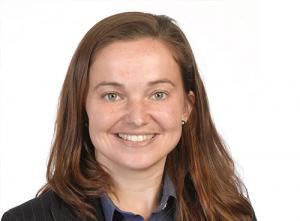 Jamie Dunckley of the Electric Power Research Institute
Jamie Dunckley of the Electric Power Research Institute
ConEdison established the Digital Customer Experience (DCX), an ambitious program to revamp antiquated technology and processes, and develop dynamic products aimed at helping customers make informed choices about their energy consumption. Following the devastation of Hurricane Sandy, New York established the Reforming the Energy Vision initiative, and in response, ConEdison realized it had to meet increasing customer demand for personalized and accessible information both for regulatory compliance and to thrive as a twenty-first century utility.
Originally overseeing that epic task is Michael Murphy, general manager of customer operations at ConEdison. He is responsible for four teams. Eric Mastroianni is customer operations lead for program oversight with a team of digital product owners that represent the customer and internal stakeholders to define and deliver value across digital channels.
Edwin Perez and Jennifer Moy are IT leads for the strategic technical architecture of the digital landscape and to uphold the technology guiding principle to support digital infrastructure. They provide direction to IT professionals.
Mike Salerno is corporate affairs lead and with his team handle brand consistency. The aim is to deliver thoughtful editorial and content with the customer voice at center.
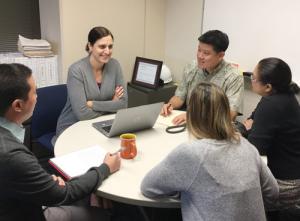 Rebecca Dayhuff Matsushima of Hawaiian Electric
Rebecca Dayhuff Matsushima of Hawaiian Electric
DCX taps into the near-real-time energy data created by ConEdison's growing network of smart meters to engage all customers. Working with a long list of technology partners, ConEdison now provides data-driven energy insights to customers instantly.
DCX spawned a responsive website and intuitive mobile app, allowing customer interaction with ConEdison. Because of DCX, ConEdison is the first U.S. utility to provide five-minute interval data to customers with virtually no lag; eighty-three percent of customers now have a My Account login, up from thirty-six percent pre-DCX; click rates on the website have risen by forty percent; and ConEdison's app star rating increased from 1.9 to 4.8 stars (out of five).
DCX has delighted customers. That's a big deal when people are happy and excited about their utility company. According to Murphy, it's only the beginning for innovation, because digital transformation doesn't just end, rather it's a mindset and a commitment to continually advancing.
8. Chris Spears, Catherine O'Dell and Tom Butler of North Carolina Electric Cooperatives
You don't have to be a huge utility to be an innovator as proven by the Butler Farms microgrid, a collaboration of Dunn, N.C.-based South River EMC, Butler Farms and North Carolina's Electric Cooperatives.
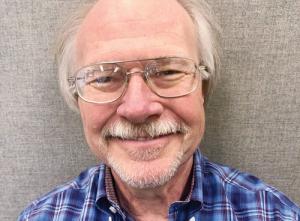 John Smolenski of Tampa Electric
John Smolenski of Tampa Electric
If pigs could fly, they would fly over to Butler Quality Pork and Bioenergy Farms in Lillington, N.C., which has driven innovation through its own sustainability research for the last ten years by implementing covered lagoons, twenty kilowatts of solar generation and a hundred and eighty-five kilowatts of methane-powered electric generation.
Now the Butler Farms microgrid is the first electric co-op microgrid in the state developed in partnership with the agricultural industry, and the first that utilizes components owned by a co-op member. It integrates emerging technologies to modernize the electric grid, combining local energy resources and control technologies to provide power to a defined area.
The project's benefits will help spur innovation. By making use of local energy sources to supply local loads, the microgrid can improve the overall resiliency of the electric grid. It optimizes deployment of renewable resources, both solar power and biogas, and is being explored as a demand-response resource. It serves as a case study and a learning laboratory for how these technologies can be deployed in the future, and how industries can work together to support innovation, sustainability and quality of life.
Kudos to those improving agriculture, because we all like to eat: Chris Spears, CEO of South River EMC; Catherine O'Dell, South River EMC's V.P. of member services and public relations; and Tom Butler, farm owner. And who knows, maybe if innovation continues like this, one day pigs might fly.
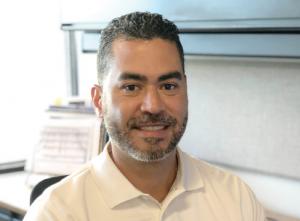 Jose Aponte of Tampa Electric
Jose Aponte of Tampa Electric
Just ask Tom Butler who has won awards for innovations at his farm. Catherine O'Dell with South River EMC who was a military photojournalist with the U.S. Army, and now along with CEO Chris Spears spurs economic development efforts in the Tar Heel State.
9. Brian D'Agostino, Steve Vanderburg and Katie Giannecchini of San Diego Gas & Electric
Simply a no-brainer to be named a top innovator is San Diego Gas & Electric. We all have watched the devastation caused by wildfires across the western United States, and in the San Diego region, wildfire was identified as the number one operational risk to that utility due to the region's complex topography, lack of rainfall, and susceptibility to dry, hot winds called Santa Anas. SDG&E is fighting back through innovation.
Innovative tools were developed by SDG&E's meteorology team consisting of Brian D'Agostino, director of fire science and climate adaptation, Steve Vanderburg, principal meteorologist and Katie Giannecchini, meteorology data scientist.
To better prepare for, respond to, and recover from severe weather and wildfire events, SDG&E's team developed and built what is arguably the nation's largest utility-owned weather network. At a hundred and seventy-seven stations, SDG&E's weather network provides situational awareness of potential weather threats on the electric system. Each station provides readings every ten minutes of temperature, humidity, and wind speed. With over two hundred thousand pieces of weather data collected daily, this weather system informs operational decision-making to mitigate risks associated with adverse weather conditions and wildfires.
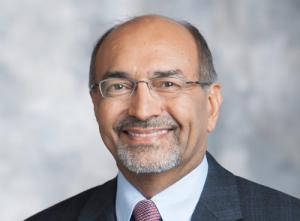 Mahesh Morjaria of First Solar
Mahesh Morjaria of First Solar
It should be no surprise this was created. D'Agostino leads the team and became the first meteorologist hired by SDG&E in 2009 to develop a weather program. He has a huge social media presence and is worth checking out on YouTube, FaceBook and Twitter.
Veteran storm chaser Vanderburg, the second meteorologist brought onboard at SDG&E, is a major contributor to these efforts, and the duo are featured in an informative SDG&E emergency fire preparedness brochure that everyone should read.
In 2013, Giannecchini joined, and she has a master's in atmospheric sciences. With this formidable team, in June 2018 SDG&E was named winner of the EEI's 2018 Edison Award for enhancing wildfire preparedness.
SDG&E later collaborated with the U.S. Forest Service and the University of California at Los Angeles to develop the Santa Ana Wildfire Threat Index. The SAWTI calculates the potential for large wildfire activity based on the strength, extent, and duration of the wind, dryness of the air, dryness of the vegetation, and greenness of the grasses.
SDG&E's meteorologists also helped develop a sophisticated weather model called the Fire Potential Index. The FPI communicates the potential impact of wildfires to the utility on any day. This seven-day forecast, produced daily, classifies the fire potential based on weather, both live and dead fuel moisture, and vegetation. These are all shared among fire agencies.
Significant intel related to the wildfire potential is also gathered from SDG&E's Wildfire Risk Reduction Model, which integrates the latest weather and GIS technology to understand wildfire growth patterns. A first of its kind in the nation and developed by SDG&E in collaboration with a local company, Technosylva, WRRM assesses the areas of highest fire danger before a blaze begins so preventative measures can be taken.
10. Jamie Dunckley of the Electric Power Research Institute
Electric vehicles are taking over the world. To push that along, EPRI's Jamie Dunckley partnered with Salt River Project on an industry-first EPRI mission: a project that monitored a hundred and one EVs twenty-four hours a day over one year, tracked their impacts on the grid, and helped SRP plan for EVs in its service territory.
No stranger to heavy data collection, Dunckley was perfect for the job. During her postdoctoral position, Jamie managed an underwater research station in Monterey Bay, and data from the live stream helped monitor oceanographic conditions such as salinity, velocity, and visibility in a productive region of the California coast.
One of the current major gaps in EV markets includes questions around charging infrastructure, such as how much to install, where to install it, and what it means for the grid. Key questions utilities are asking: What are the potential energy, and load impacts from a fleet of individual customer EVs in a utility's service territory? Where do EV drivers charge over the course of a year? What is the grid impact of EV charging? So many unknowns.
The answers were found in tracking devices, much like what is done with wolves in national parks. The project collected GPS data from the EVs as well as electricity data from the customers, including charging load, charging times and other data, and driving distance. This was overlaid against known locations of charging stations, major roads, etc.
Dunckley presented on multiple occasions to stakeholder groups inside SRP, and SRP is using the project results to inform its strategic EV program development. SRP and EPRI received numerous requests to speak to other utilities about lessons learned. The Maryland Public Service Commission and Illinois Commerce Commission inquired about the project.
The report combined with EPRI's past charging load research opens the door for more innovative research in high-power DC fast-charging. Next is the idea of DC-as-a-service, basically, if utilities provided DC voltage and a rate. How does that compare with the incumbent AC-as-a-service vis-à-vis the high-power DC fast-charging plazas that numerous utilities are facing? Looks like more tracking devices, and wolves, will be needed.
11. Rebecca Dayhuff Matsushima of Hawaiian Electric
It's exciting that contracts can be innovative. Hawaii is a test-bed in a sense for renewables, so it should be no surprise that Hawaiian Electric innovated its way on to the winner's list with its Renewable Distributed Generation Model Contract.
That model contract replaces traditional seniority-based curtailment, newest plants curtailed first, with a system using excess generation for critical grid support services. It allocates curtailment risk and costs more equitably between utilities and developers, which should make financing projects easier. It transforms the utility from passive energy taker to proactive grid manager, gaining energy and ancillary services generally at fixed prices.
Importantly, the new contract has resulted in record low bids for new renewable energy projects, which means lower costs for customers.
The brains behind this model contract is attorney Rebecca Dayhuff Matsushima, manager, renewable acquisition department, who drafted the model PPA once the team identified the preferred approach.
The Smart Electric Power Alliance called the contract a game changer, one of the most impactful developments of 2017, providing an innovative, holistic solution to the problem of solar overproduction and curtailment, experienced increasingly where rooftop and other solar is plentiful, like Hawaii and California, and coming soon to other locales.
This contract is a big deal, because the Hawaiian Electric, including Maui Electric and Hawaii Electric Light Company, achieved a twenty-seven percent renewable portfolio standard in 2017, on the way to the goal of a hundred percent renewable energy by 2045. They are now negotiating for an unprecedented four-hundred megawatts of new renewable projects with more to come.
The new contract model is a step, along with battery storage and other technological innovations, toward what some call the holy grail of making what has been traditionally considered variable renewable energy into dispatchable renewable energy.
Expect to see a lot more innovation from Rebecca Dayhuff Matsushima because through the Hawaii State Bar Association Young Lawyers Division Legal Lines, she volunteers to answer phones and provide expertise to individuals who can't afford legal advice.
Hawaiian Electric asked for a team member shout-out and PUF doesn't want to disappoint: Rosella Motoki, Reese Yorimoto, Colette Miller, Dora Nakafuji, Shari Ishikawa, Talin Sokugawa, Rogelio Buccat, Duke Oishi, Henry Lee; Hawaii Electric Light's Lisa Dangelmaier, Sharon Hirai, Maui Electric's Chris Reynolds, Jarett Contino, and Joseph Streeter.
12. Mahesh Morjaria of First Solar and John Smolenski and Jose Aponte of Tampa Electric
Hot off the presses, fitting for a solar winner, is a breakthrough showing the real potential for grid flexibility at high penetrations of solar. This will result in tangible cost savings.
First Solar's study simulates operations of an actual utility system, Tampa Electric Company, and its thermal generation portfolio to demonstrate the economic value of including solar as an active participant in balanbalancing requirements.
The genius burning behind the study includes from First Solar, Mahesh Morjaria, VP for photovoltaic system development; and from TECO, John Smolenski, senior consultant, advanced technology, and Jose Aponte, manager, generation planning.
It should come as no surprise that Morjaria is involved in an award-winning innovative project as he already holds four patents. And between Smolenski and Aponte they boast fifty years with TECO.
The study explores three solar operating modes: must-take, which assumes zero solar curtailment; non-dispatchable, where solar can be curtailed as an emergency measure; and dispatchable, where solar can be fully dispatched to the needs of the grid including providing essential grid services.
The study finds that balancing supply and demand with must-take solar becomes impossible when solar penetrations exceeded fourteen percent of annual energy demand. Some level of solar flexibility is necessary to reach widespread solar deployment.
Dispatchable solar is found to provide economic value at all levels of solar energy deployment and is essential to retaining the value of additional solar generation at higher solar penetration levels. The results indicate that solar would provide the most value to the system if grid operators were to fully utilize the dispatchable capabilities of solar power plants.
Treating solar as a dispatchable resource reduces thermal commitments on the system, resulting in tangible cost savings. Now that’s hot.
See also: The 2018 Honor Roll: Seventy-one Qualifying Individuals or Teams Nominated



